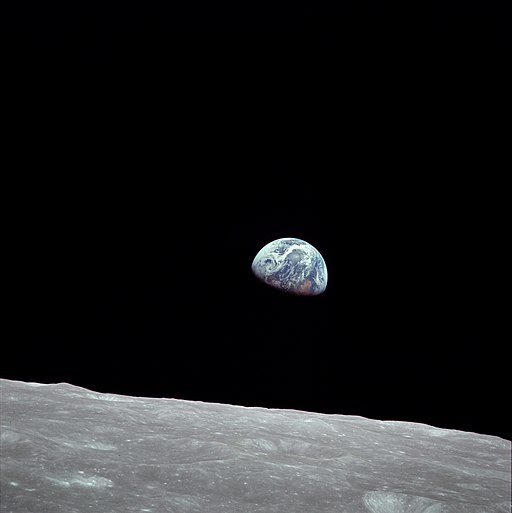It’s the Journey That Matters
— from President John F. Kennedy’s “Race for Space” speech delivered before students and faculty of Rice University in Houston, Texas, on September 12, 1962.
Yesterday was the 50th anniversary of the walk on the moon by Apollo 11 astronauts Neil Armstrong and Buzz Aldrin, an event witnessed on television by people around the world. The achievement after a decade of hard work and dedication by NASA personnel was enormous, of course, and as a prestigious accomplishment in science and engineering it has not been topped in the 50 years since July 20, 1969.

“Earthrise”, a photograph taken by astronaut Bill Anders aboard Apollo 8 on December 24, 1968.
That picture and the emotions it stirred gave impetus and urgency to the environmental movement, and before the end of 1970 people around the world recognized the first Earth Day and in the United States the Environmental Protection Agency began operations. To strive for a decade to land astronauts on the moon, increasing knowledge and spurring progress all along the way, and then to have those astronauts turn around and look back toward the earth, sharing that view with everyone, that was perhaps the greatest legacy of the Apollo space program.
— Techly 
The opening sequence of the 1982 meditative documentary Koyaanisqatsi depicts the Holy Ghosts portion of the Great Gallery pictograph in Horseshoe Canyon in Utah, followed by the liftoff of Apollo 11 from the Kennedy Space Center in Florida on July 16, 1969. Godfrey Reggio directed the film, Ron Fricke was the cinematographer, and Philip Glass wrote the music. The title comes from the Hopi language and the film makes oblique and direct references to Hopi prophecies, or warnings; and while the Great Gallery pictograph did not originate with the Hopi, they believe it and other pictographs in the Four Corners region are the work of their ancestors and they hold them sacred.
